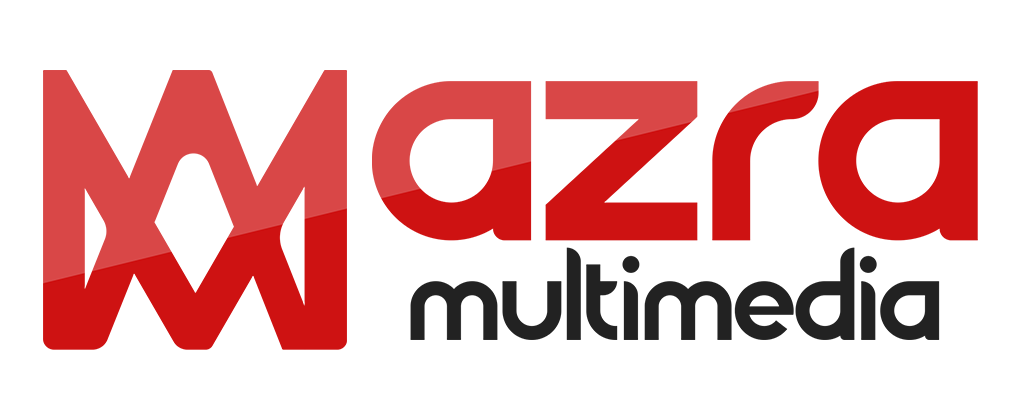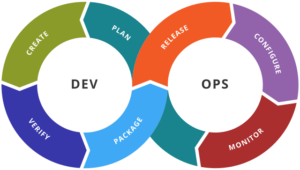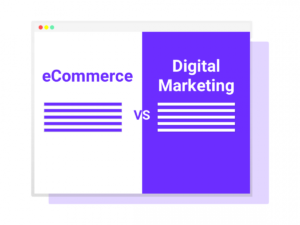Best Smartphones of 2025 Compared
Staying on top of tech trends means knowing the Best Smartphones of 2025 Compared and what they offer. The year 2025 brought a wave of powerful flagship phones from top brands, each pushing the limits in performance, camera capabilities, and design. Below, we compare five standout devices – Apple, Samsung, Google, OnePlus, and Xiaomi – highlighting their key features, approximate global prices, plus clear pros and cons for each. This Best Smartphones of 2025 Compared list will help you see how these top flagships stack up.

Apple iPhone 15 Pro Max
No list of the Best Smartphones of 2025 Compared would be complete without Apple’s iPhone 15 Pro Max. Launched late 2024 and reigning through mid-2025, this 6.7-inch flagship introduced a lightweight titanium design and Apple’s A17 Pro chip for blazing-fast performance. Its triple camera system features a 48 MP main camera and an exclusive 5× optical telephoto lens (120 mm) on the Pro Max model. The switch to USB-C and the new Action Button further modernize the device. The iPhone 15 Pro Max starts around $1,199 for 256 GB storage, reflecting its ultra-premium positioning.
Pros:
-
Top-notch performance with the A17 Pro (industry-first 3 nm chip) and excellent battery life.
- Superb camera quality with improved low-light photography and a 5× optical zoom (the longest ever on an iPhone).
- Premium build (titanium frame) that’s durable yet lighter than past models.
-
Long software support and the robust Apple ecosystem (many years of iOS updates).
Cons:
-
Very expensive – one of the priciest phones on the market.
- Large and a bit unwieldy for small hands (6.7″ screen and sizable camera bump).
- Charging speeds lag behind some competitors (max ~27 W, ~50% in 30 min).
- Closed ecosystem and limited customization compared to Android phones.
Samsung Galaxy S25 Ultra
Samsung’s Galaxy S25 Ultra earns its place among the Best Smartphones of 2025 Compared as a feature-packed Android powerhouse. It sports a huge 6.9-inch Dynamic AMOLED 2X display (QHD+ at 120 Hz) and a new Snapdragon 8 Elite chipset, delivering top-tier performance and efficiency. The S25 Ultra continues Samsung’s camera dominance with a quad-lens setup: a 200 MP main camera, a 50 MP 5× periscope telephoto, a 10 MP 3× telephoto, and an upgraded 50 MP ultrawide. This means exceptional versatility from ultra-wide shots to long-range zoom. It also retains the built-in S Pen stylus for note-taking and drawing. Starting at $1,299 for 12 GB RAM and 256 GB storage, the S25 Ultra matches its predecessor’s launch price despite the upgrades.
Pros:
-
One of the most versatile camera systems available – high-resolution sensors and dual zoom lenses for 3× and 5× optical zoom. Excellent image quality in all conditions.
-
Stunning 6.9″ LTPO AMOLED display with 120 Hz refresh for smooth visuals and S Pen support for productivity.
-
Top-end performance with Snapdragon 8 Elite (Gen 4) chip and ample RAM, plus a big 5000 mAh battery for all-day use.
-
Premium build (now with a tough titanium alloy frame) and full IP68 water/dust resistance, despite the large size.
Cons:
-
Very high price, on par with Apple’s Pro Max, making it a significant investment.
-
Bulky and heavy – the expansive screen and battery make it less pocket-friendly.
-
Software experience is feature-rich but comes with a lot of pre-installed apps (bloatware) in One UI.
-
Charging capped at 45 W wired, which is slower than some rival flagships that offer 80–100 W+ charging speeds.
Google Pixel 9 Pro
Google’s Pixel 9 Pro stands out on this Best Smartphones of 2025 Compared list for its software and camera prowess. Unlike its 6.7″ predecessor, the Pixel 9 Pro comes with a more compact 6.3-inch OLED display (still 120 Hz), making it easier to handle without sacrificing quality. It runs on Google’s custom Tensor G4 chip (codenamed “Gemini”), enabling advanced on-device AI for features like next-gen voice assistant and superior computational photography. The Pixel 9 Pro’s triple rear camera system continues Google’s tradition of stellar photography: a 50 MP main sensor, a 48 MP ultrawide, and a 48 MP 5× telephoto that delivers up to 30× digital Super Res Zoom. This setup, combined with Google’s image processing, produces detailed, true-to-life photos in all scenarios. At launch it was priced around $999 in the US for the base variant (16 GB RAM, 128 GB storage), undercutting some other flagships.
Pros:
-
Best-in-class computational photography – produces fantastic photos effortlessly, with Google’s AI algorithms enhancing dynamic range and night shots.
-
Clean Android experience with timely updates (Pixel phones get fast OS updates and at least 5 years of support).
-
Comfortable size (6.3″ display) for a flagship, with a sharp OLED and high brightness (up to 3000 nits peak) for visibility.
-
Unique software features (Call Screening, Magic Eraser, etc.) powered by Tensor’s AI, adding convenience beyond raw specs.
Cons:
-
Tensor G4 chip’s raw performance and efficiency still trail the fastest Qualcomm chips, meaning not the absolute best for heavy 3D gaming (though it’s smooth in general use).
-
Battery life is good but not class-leading given a 4700 mAh battery – just about a day of moderate use.
-
Fewer camera hardware options than some rivals (no extreme 10× optical zoom like Samsung, for example), relying on software for zoom beyond 5×.
-
Limited availability in some regions and no official expandable storage or multiple Pro size options (though this year introduced a Pixel 9 Pro XL at 6.8″ for those wanting a larger device).
OnePlus 13
OnePlus has long been known for delivering “flagship killer” value, and the OnePlus 13 confidently earns its spot in the Best Smartphones of 2025 Compared lineup. This flagship was released internationally in early 2025, featuring a spacious 6.8-inch LTPO OLED display with quad-HD+ resolution and an ultrafast 120 Hz refresh rate. Under the hood it packs the Snapdragon 8 Elite chip (Qualcomm’s 2025 top-tier 3 nm processor) paired with up to 16 GB RAM, ensuring blazing performance on OxygenOS 15. Impressively, OnePlus managed to fit a huge 6,000 mAh battery – the largest in its class – while keeping the phone relatively thin, thanks to new silicon-carbon battery tech. Photography is another highlight: the OnePlus 13 carries a triple 50 MP camera system co-developed with Hasselblad, covering wide, ultrawide, and 3× telephoto zoom lenses. The result is excellent image quality with natural colors and up to 120× digital zoom for far shots. Despite all these flagship specs, OnePlus priced the 13 aggressively – starting at $899 (12 GB/256 GB) in the US, undercutting most rivals by hundreds. (The 16 GB/512 GB model is $999.99, still a strong value.)
Pros:
-
Outstanding value for money – flagship specs (Snapdragon 8 Elite, 120 Hz QHD display, big battery) at a lower price than most competitors.
-
Massive 6000 mAh battery with very fast charging (100 W wired, 50 W wireless) for minimal downtime. Battery life is class-leading in 2025 flagships.
-
Triple 50 MP cameras yield sharp images; Hasselblad color tuning produces beautiful, vivid shots. Great all-around camera performance for the price.
-
Premium build (aluminum frame, ceramic/glass back or vegan leather options) and now with IP68/IP69 water resistance, a first for OnePlus.
Cons:
-
Lacks some niche features of pricier phones (no periscope beyond 3× zoom, no adaptive refresh below 1 Hz for always-on display efficiency, etc.).
-
Software is a heavy Android skin (OxygenOS has become more ColorOS-like), which not everyone will prefer – though it’s feature-packed.
-
No expandable storage and no headphone jack (standard for flagships now, but worth noting).
-
The flat design with 6.8″ size makes it broad; some may find it a bit unwieldy without a case, despite being slimmer and lighter than some rivals.
Xiaomi 15 Ultra
Xiaomi’s 15 Ultra is a camera-focused flagship that truly deserves mention among the Best Smartphones of 2025 Compared. Unveiled at MWC 2025, this device is designed for mobile photography enthusiasts. It boasts a cutting-edge Leica-tuned quad camera array: a 50 MP main camera with a giant 1-inch Sony sensor and bright f/1.63 Leica lens, a second 50 MP portrait tele, an astounding 200 MP periscope telephoto for long-range zoom, and a 50 MP ultrawide. This setup pushes smartphone photography to new heights, rivaling dedicated cameras in some respects. The Xiaomi 15 Ultra matches its camera prowess with top-end specs: a 6.73-inch WQHD+ AMOLED display (1–120 Hz adaptive), the Snapdragon 8 Elite chip, up to 16 GB RAM and 1 TB storage, and a large 5,410 mAh battery with rapid charging. Its design is premium, with a sleek glass/ceramic finish and IP68 durability, and Xiaomi’s new HyperOS software based on Android. With all its tech, the Xiaomi 15 Ultra is the priciest of the bunch – priced from about $1,555 USD for the base model on its global launch. It’s a luxury device aimed at those who want the absolute best in mobile imaging.
Pros:
-
Exceptional camera system – currently one of the best camera phones in the world. The combination of a 1″ main sensor and a 200 MP periscope telephoto yields outstanding detail, low-light performance, and zoom capability. Leica’s expertise shows in the image quality and color tuning.
-
Gorgeous 6.73″ AMOLED display with LTPO (1–120 Hz) for smooth visuals and power savings. High peak brightness and Dolby Vision support make it great for media.
-
Top-tier hardware across the board: Snapdragon 8 Elite ensures snappy performance, and the huge 5410 mAh battery means long endurance; fast wired and wireless charging get you topped up quickly.
-
Premium build and feel – available in high-end materials (e.g. ceramic back options), and despite the camera hardware, it maintains IP68 water resistance. Xiaomi’s HyperOS is also leaner and more refined than past MIUI versions, improving the user experience.
Cons:
-
Extremely expensive, even more than Apple and Samsung’s flagships. The high price and limited availability in some regions (Xiaomi has minimal presence in North America) make it an exclusive purchase.
-
Bulkier and heavier than most phones due to the large camera module and battery – not the most pocket-friendly device.
-
Software updates are not as timely as Google or Samsung (though Xiaomi promises support, major Android version updates may arrive later).
-
MIUI/HyperOS, while improved, still comes with a fair bit of bloatware and occasional quirks that might frustrate users unfamiliar with Xiaomi’s ecosystem.




